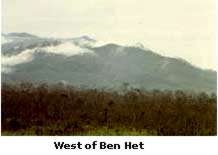The following is from the Operational Report of the 1st Battalion
92nd Artillery for period ending 31 July 1969, (Unclassified) I have
tried to limit the information to the time that is documented in the
Award of the Valorous Unit Citation.
See also Map Number: 6538-3
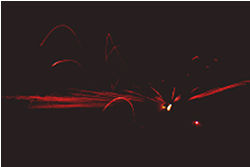 Towards
the end of April and the beginning of May 1969, intelligence indicators
pointed to a build up of NVA Forces in the Dak To/ Ben Het Area. It
was discovered that two NVA Infantry Regiments and major portions
of an NVA Artillery Regiment were present to the south of Ben Het,
FSB 6 and Dak To. The target appeared to be Dak To. On 24 May 1969,
the 24th Special Tactical Zone established a Combined Tactical Operations
Center at FSB 1 Dak To, in order to control the troops being inserted
into the area to counter the NVA threat. The Commander of the 1st
Battalion 92nd Artillery, LTC Nelson Thompson was designated the Fire
Support Coordinator for the Dak To/ Ben Het area of operations. The
Dak To Combined Fire Support Coordination Center under his command
was to control the fires of not only US but also all ARVN artillery
in the area. This would eventually evolve into the equivalent of one
Battalion Group; forty-one tubes of Field Artillery and six Air Defense
Artillery twin 40mm M-42’s. The Fire Support Coordination Center
also coordinated all air fires, to include B-52 strikes, sky spots
and helicopter gun ships. During the period 04 May to 08 July this
force coordinated over 150,000 rounds of artillery, 1100 sorties of
Forward Air Control directed Tactical Air Strikes, 533 combat sky
spots and 142 B-52 strikes. Also in this period, the 24th Special
Tactical Zone employed nineteen maneuver battalions, with as many
as nine battalions committed at one time. This same period saw friendly
element kill more than eighteen hundred NVA troops.
Towards
the end of April and the beginning of May 1969, intelligence indicators
pointed to a build up of NVA Forces in the Dak To/ Ben Het Area. It
was discovered that two NVA Infantry Regiments and major portions
of an NVA Artillery Regiment were present to the south of Ben Het,
FSB 6 and Dak To. The target appeared to be Dak To. On 24 May 1969,
the 24th Special Tactical Zone established a Combined Tactical Operations
Center at FSB 1 Dak To, in order to control the troops being inserted
into the area to counter the NVA threat. The Commander of the 1st
Battalion 92nd Artillery, LTC Nelson Thompson was designated the Fire
Support Coordinator for the Dak To/ Ben Het area of operations. The
Dak To Combined Fire Support Coordination Center under his command
was to control the fires of not only US but also all ARVN artillery
in the area. This would eventually evolve into the equivalent of one
Battalion Group; forty-one tubes of Field Artillery and six Air Defense
Artillery twin 40mm M-42’s. The Fire Support Coordination Center
also coordinated all air fires, to include B-52 strikes, sky spots
and helicopter gun ships. During the period 04 May to 08 July this
force coordinated over 150,000 rounds of artillery, 1100 sorties of
Forward Air Control directed Tactical Air Strikes, 533 combat sky
spots and 142 B-52 strikes. Also in this period, the 24th Special
Tactical Zone employed nineteen maneuver battalions, with as many
as nine battalions committed at one time. This same period saw friendly
element kill more than eighteen hundred NVA troops.
Due to the growing complexity of the organization and situation, a
Battalion Group was established on 09 June 1969. The Forward Command
Post remained at Dak To while the 6th Battalion, 14th Artillery established
a Forward Command Post at Ben Het. The Commanding Officer of the 1st
Battalion 92nd Artillery was designated the Battalion Group Commander.
During the period of operations, both Command Posts were subjected
to intense enemy fire, B-40 rockets, 75mm recoilless rifle and sapper
attacks.
During
the month of June 1969, Ben Het was surrounded by a large number of
well-armed and well dug-in NVA. The NVA had the firing data for the
airfield and for all established helicopter pads. When an aircraft
attempted to land, it not only received small arms and automatic weapons
fire, but also immediately upon landing was subjected to mortar and
recoilless rifle fire. Large NVA Forces effectively cut the road to
Ben Het, and aerial resupply was essential.
May-July
1969 the 1st Battalion 92nd Artillery Forward Observer Teams were
assigned to the following Units: 3rd Cavalry Squadron, 1stSquadron
10th Cavalry, 1st and 4th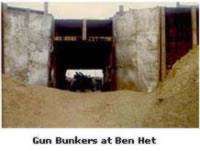 Battalions 42nd Regiment, 2nd and 5th Mobile Strike Force, 2nd and
3rd Battalion 47th Regiment, 1st and 3rd Battalions 53rd Regiment,
11th, 22nd and 23rd Ranger Battalions ARVN. A Forward Observer Team
was sent to Dak To District, to fire defensive targets for friendly
villages. Two Aerial Observers were used on a daily basis using two
C-1 Aircraft (headhunters).
Battalions 42nd Regiment, 2nd and 5th Mobile Strike Force, 2nd and
3rd Battalion 47th Regiment, 1st and 3rd Battalions 53rd Regiment,
11th, 22nd and 23rd Ranger Battalions ARVN. A Forward Observer Team
was sent to Dak To District, to fire defensive targets for friendly
villages. Two Aerial Observers were used on a daily basis using two
C-1 Aircraft (headhunters).
On
14 May 1969, SP4 Eric J Greco, Headquarters Battery and member of
one of the 1st Battalion 92nd Artillery Forward Observer Teams was
killed in action. He was killed when his Forward Observer position
was attacked by the NVA.
Radars were employed to assist the battalion in its operations. Two
AN/MPQ-4 and one AN/PPS-4 counter mortar radars, one AN/MPQ-10 counter
mortar, one AN/IPS-4 and one AN/PPS-5 was employed. These Units gave
counter mortar and personnel movements respectively.
1/92nd Artillery Forward Command Post was located at FSB 1, Dak To
at Grid ZB005217. While Battalion Headquarters and Service Batteries
remained at Artillery Hill in Pleiku, with the mission of General
Support Reinforcing (GSR) to the Battalion and the 52nd Artillery
Group.
A Battery 1/92nd Artillery was located at the following locations:
A Battery (-) was located at LZ Mary Lou (ZA223829), vicinity of Kontum
with a mission of GSR. The 6th Battalion 14th Artillery. A Battery
Platoon was at Ben Het, with the mission of GSR with priority of fires
to Ben Het counter battery.
B Battery was located at FSB 6 (YA863265) 7 km southwest of Dak To.
C Battery (-) was located at LZ Bass (ZA028935) 22 km west of Kontum
and C Battery Platoon was located at FSB 12, Ben Het, 15 km northwest
of Dak To.
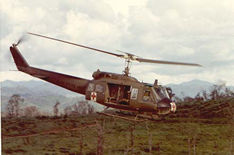 On
04 May A Battery (-) moved to FSB 1, Dak To (ZB003215) with the mission
of GSR 1/92nd Artillery. A Battery supported 24th Special Tactical
Zone Operations in the Dak To/Ben Het area. On 09 May, FSB 1 began
receiving daily incoming enemy fire. During the next month 703 rounds
of incoming 122mm rockets were received at FSB 1. On 11 May 1969,
PFC Ronald J. Carter of A Battery was killed in action when the firing
bunker he was in received direct hits from both a B-40 rocket and
mortars. Due to the daily aerial attacks by the NVA, some bunkers
were built with an overhang. This one had an opening on top with two
howitzers inside and aiming west. The bunker withstood the attack
but shrapnel came through the opening on top, killing PFC Carter and
wounding several other men. On 13 May, a 122mm rocket landed approximately
five feet from a manned howitzer, resulting in four men killed in
action, and eleven men wounded in action. The four men who were killed
were: SP4 Thomas M. Connell, SP4 Thomas W. Davis, SSGT Donald R. Kraft
and PFC Lynn J. Wieser.
On
04 May A Battery (-) moved to FSB 1, Dak To (ZB003215) with the mission
of GSR 1/92nd Artillery. A Battery supported 24th Special Tactical
Zone Operations in the Dak To/Ben Het area. On 09 May, FSB 1 began
receiving daily incoming enemy fire. During the next month 703 rounds
of incoming 122mm rockets were received at FSB 1. On 11 May 1969,
PFC Ronald J. Carter of A Battery was killed in action when the firing
bunker he was in received direct hits from both a B-40 rocket and
mortars. Due to the daily aerial attacks by the NVA, some bunkers
were built with an overhang. This one had an opening on top with two
howitzers inside and aiming west. The bunker withstood the attack
but shrapnel came through the opening on top, killing PFC Carter and
wounding several other men. On 13 May, a 122mm rocket landed approximately
five feet from a manned howitzer, resulting in four men killed in
action, and eleven men wounded in action. The four men who were killed
were: SP4 Thomas M. Connell, SP4 Thomas W. Davis, SSGT Donald R. Kraft
and PFC Lynn J. Wieser.
As
was true throughout the War, there was no shortage of brave men in
the 1/92 Artillery. Thirteen men volunteered from Artillery Hill,
Headquarters and Service Battery, to replace the dead and wounded.
These men went in to harms way and airlifted into FSB 1 that evening.
A Battery continued to heroically operate under fire, supporting the
maneuver elements and returning accurate and effective counter battery
fire whenever Dak To was attacked. In addition to a large number of
122mm rockets fired into the Dak To compound, recoilless rifle fire
was received against the A Battery position. On 27 May, A Battery
(-) was assigned the mission of GSR with priority of fires to the
2nd Ranger Group (ARVN), which was in continuous contact with the
enemy.
The
mission of A Battery Platoon continued to be GSR with priority of
fires to Ben Het counter battery. On 28 May a CV-2 aircraft resupplying
Ben Het by airdrop, accidentally dropped a 55-gallon drum of fuel
oil, on one of A Battery’s gun bunkers. No casualties resulted,
but the flash wall on the right side of the bunker was destroyed.
On 02 June, the mission of A Battery (-) was changed to GSR with priority
of fires to the 4th Mobile Strike Force Battalion. On 04 June, the
mission was also changed to GSR of A Battery Platoon to support 4th
Mobile Strike Force Battalion. On this day, A Battery had two men
killed in action, PFC William C. Burgess and PFC David R. Porter.
Three men were wounded as a result of incoming 75mm recoilless rifle
fire. During periods of incoming 122mm rocket fire, the NVA began
to direct recoilless rifle fire against A Battery positions when the
men manned the howitzers to fire counter battery fire. On 05 June,
A Battery Platoon, 1/92nd Artillery, took a direct hit on a gun section
bunker. No casualties resulted, but one bunker was destroyed and needed
to be rebuilt while A Battery was under fire. On 06 June, A Battery
Platoon received a direct hit on the powder bunker, resulting in the
loss of 560 canisters of powder. On 07 June, a NVA B-40 Rocket hit
A Battery’s 3rd gun section bunker at Dak To and a flash wall
was destroyed.
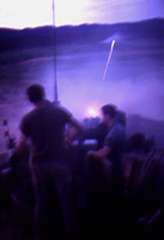 On
09 June, A Battery’s mission was changed to GSR with priority
of fires for one Platoon of 2nd Mobile Strike Force Battalion. From
08 June, to 12 June, one A Battery Platoon conducted a daily hipshoot,
in order to be capable of firing counter battery while Dak To was
receiving incoming enemy fire. On 08 June, the FDC at Ben Het received
a direct hit resulting in only minor damage. On 09 June, A Battery
Platoon had six men wounded in action, a result of incoming 75mm recoilless
rifle fire. On 17 June, one man was wounded in action from mortar
fragments. On 19 June, the mission of A Battery (-) became GSR with
priority of fires for a Platoon of the 4th Mobile Strike Force Battalion.
The other Platoon was assigned to the 5th Mobile Strike Force Battalion.
On 19 June, the mission of A Battery (-) reverted to GSR. A Battery
Platoon sustained three hits on gun bunkers on 22 and 23 June, resulting
in only superficial damage. On 23 June, A Battery Platoon’s powder
bunker sustained a direct hit, resulting in five men wounded in action.
This resulted in a loss of 350 canisters of white bag powder and destruction
of the bunker. On 26 June, the crews of A Battery Platoon exchanged
positions with the crews of C Battery Platoon, 1/92nd Artillery Dak
To. The howitzers remained in place. A Battery 1/92nd Artillery was
once again together as a Battery. On 14 July, A Battery moved four
howitzers to Artillery Hill to support the 3rd Battalion 6th Artillery.
On 15 July, A Battery (-) was road marched to LZ Oasis, and from there
to LZ Elaine where it had the mission of GSR with priority of fires
to the 1st Squadron, 10th Cavalry. Throughout this period, A Battery
1/92nd Artillery was under daily attack. Each time the battery had
a fire mission; the NVA would attack the battery with all weapons
at its disposal.
On
09 June, A Battery’s mission was changed to GSR with priority
of fires for one Platoon of 2nd Mobile Strike Force Battalion. From
08 June, to 12 June, one A Battery Platoon conducted a daily hipshoot,
in order to be capable of firing counter battery while Dak To was
receiving incoming enemy fire. On 08 June, the FDC at Ben Het received
a direct hit resulting in only minor damage. On 09 June, A Battery
Platoon had six men wounded in action, a result of incoming 75mm recoilless
rifle fire. On 17 June, one man was wounded in action from mortar
fragments. On 19 June, the mission of A Battery (-) became GSR with
priority of fires for a Platoon of the 4th Mobile Strike Force Battalion.
The other Platoon was assigned to the 5th Mobile Strike Force Battalion.
On 19 June, the mission of A Battery (-) reverted to GSR. A Battery
Platoon sustained three hits on gun bunkers on 22 and 23 June, resulting
in only superficial damage. On 23 June, A Battery Platoon’s powder
bunker sustained a direct hit, resulting in five men wounded in action.
This resulted in a loss of 350 canisters of white bag powder and destruction
of the bunker. On 26 June, the crews of A Battery Platoon exchanged
positions with the crews of C Battery Platoon, 1/92nd Artillery Dak
To. The howitzers remained in place. A Battery 1/92nd Artillery was
once again together as a Battery. On 14 July, A Battery moved four
howitzers to Artillery Hill to support the 3rd Battalion 6th Artillery.
On 15 July, A Battery (-) was road marched to LZ Oasis, and from there
to LZ Elaine where it had the mission of GSR with priority of fires
to the 1st Squadron, 10th Cavalry. Throughout this period, A Battery
1/92nd Artillery was under daily attack. Each time the battery had
a fire mission; the NVA would attack the battery with all weapons
at its disposal.
B
Battery 1/92nd Artillery was located at FSB 6 (YA933188) throughout
the reporting period. On 04 May, the 24th Special Tactical Zone Force
began operations in the area. B Battery 1/92nd Artillery supported
these operations throughout this reporting period. On 09 May, B Battery
while engaged in a Battalion Time on Target (TOT) and massing of fires
on an NVA position close to FSB 5 suffered an explosion of the breech
end of a howitzer, killing one man PFC Arturo S. Sisneros.and wounding
six others. The wounded men were medically evacuated. PFC Arturo S.
Sisneros was Promoted Posthumously to Corporal. On 11 May, the damaged
howitzer was replaced with one from C Battery 1/92nd Artillery. On
26 May, B Battery’s mission changed to GSR with priority of fires
to the 1/42nd Regiment. On 04 June, the mission was changed with one
platoon direct support of 3/42nd Regiment. On 08 June, FSB 6 received
16 incoming 75mm recoilless rifle rounds. One round hit the mess hall
and several hit an ammunition bunker. There were no casualties in
this attack. A UH-1 helicopter was hit during the first attack and
crashed into its landing area. Counter battery fire from Batteries
A, B, and C, 1/92nd Artillery destroyed the NVA’s positions.
On 11 June, FSB 6 came under attack by an NVA Infantry company with
sappers. The attack consisted of small arms fire, satchel charges,
concussion grenades, B-40 rockets, 75mm recoilless rifle rounds, and
mortar fire. Four satchel charges exploded near B Battery’s 6th
howitzer section. This did not deter the B Battery gun crew who continued
to fire their howitzer throughout the attack. No B Battery men were
wounded in this attack. Although, two men from the Civilian Irregular
Defense Group (CIDG) were wounded. Twenty-five NVA were killed in
this attack and many weapons were captured. On 19 June, B Battery‘s
mission became the GSR with priority of fires to the 2/47th Regiment.
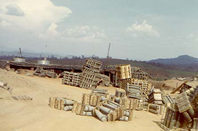 On
01 May 1969, C Battery 1/92nd Artillery, moved by road from Artillery
Hill to Plei Ring De (ZA218351). On 02 May, C Battery moved to the
Asphalt Plant (ZA896118) with the mission of GSR. On 01 June, C Battery
moved to FSB Mary Lou (ZA223829) with the mission of defense of Kontum.
On 24 June, C Battery Platoon moved by road to Dak To (ZB004217) with
the mission of GSR for the Dak To/Ben Het area. On 26 June, C Battery
Platoon’s crew was airlifted into Ben Het to exchange places
with the crew of A Battery’s Platoon. On 07 July, C Battery (-)
moved to LZ Bass to support the 4th Infantry Division.
On
01 May 1969, C Battery 1/92nd Artillery, moved by road from Artillery
Hill to Plei Ring De (ZA218351). On 02 May, C Battery moved to the
Asphalt Plant (ZA896118) with the mission of GSR. On 01 June, C Battery
moved to FSB Mary Lou (ZA223829) with the mission of defense of Kontum.
On 24 June, C Battery Platoon moved by road to Dak To (ZB004217) with
the mission of GSR for the Dak To/Ben Het area. On 26 June, C Battery
Platoon’s crew was airlifted into Ben Het to exchange places
with the crew of A Battery’s Platoon. On 07 July, C Battery (-)
moved to LZ Bass to support the 4th Infantry Division.
Service Battery besides sending volunteers to replace the WIA and
KIA kept the supplies flowing to A, B, and C, Battery’s; and
fulfilled all requests by the 52nd Artillery group to bring supplies
to other Units. The 1/92nd Artillery was the only airmobile 155mm
howitzer towed unit in the 52nd Artillery Group.
Service
Battery moved the following supplies by air, to the other batteries
during this reporting period. A Battery under daily stand off attacks,
were still able to receive 198 tons of supplies by helicopter. B Battery
received 1740 tons of supplies by helicopter. C Battery received 703
tons of supplies by Helicopter. Supplies were also brought in for
the other units by Service Battery, via air and road.
During this reporting period, the 1/92nd Artillery’s, Battalion
Surgeon not only took care of the sick and wounded of the Battalion,
but also with personnel from Headquarters Battery made fourteen MEDCAP
visits. Six hundred and sixty six villagers were also provided general
medical care.
